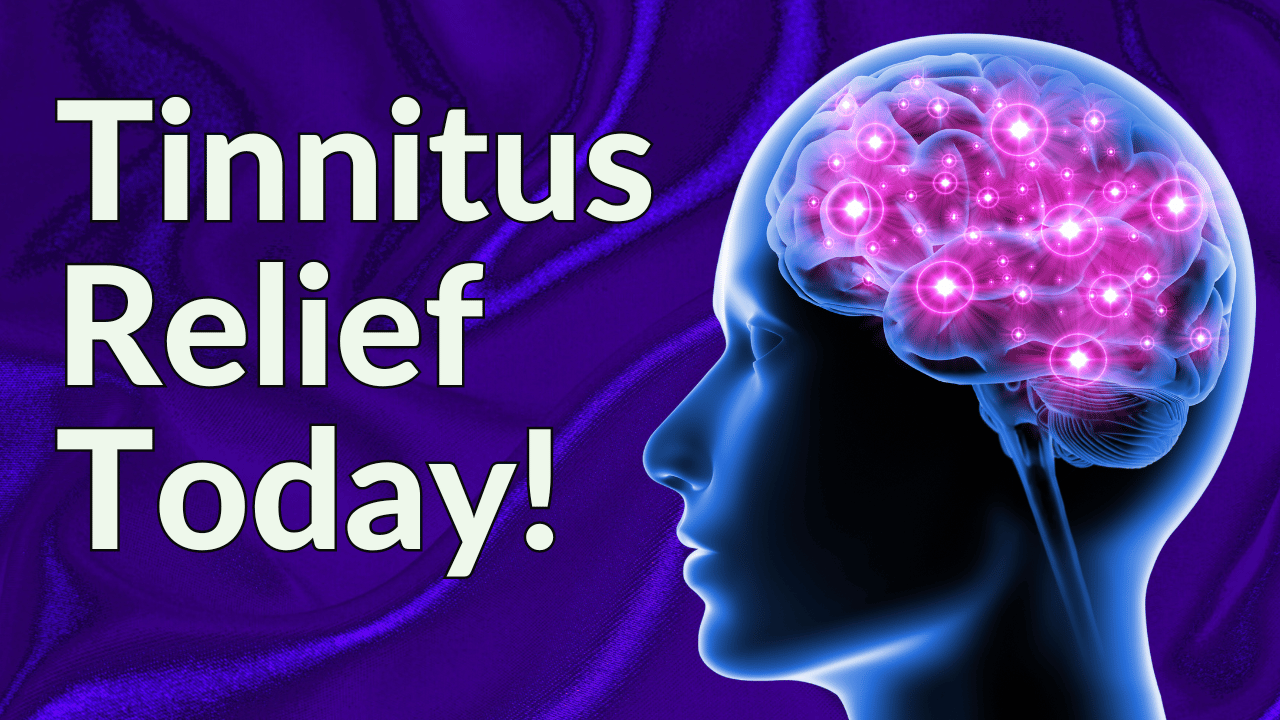Although the term itself may not be uncommon, the ins and outs of tinnitus may not be as well known or understood. Often described as ringing in the ear, tinnitus is a hearing condition that can be described in many different ways, rather than just a sensation of ringing or high-pitched whining. Can the sound of internal vibrations buzzing in the ear be tinnitus?
What Is Tinnitus?
Tinnitus is the perception of sound that is not from an external source. Tinnitus may emanate from one or both ears, or may even feel as though it is coming from somewhere else in the head–a sensation that can feel alarming. Tinnitus is frequently known as the condition involving ringing in the ears, but it can also sound like hissing, buzzing, chirping, pulsing, whooshing, and countless other sounds.
"Treble Health helped me reduce my tinnitus by about 80%, and now I can live my life again!"


"Treble Health helped me reduce my tinnitus by about 80%, and now I can live my life again!"
– Steve D.
Book a free consultation to learn which Treble Health solution is right for you. Join Steve and thousands more who have found lasting tinnitus relief.
The noises associated with tinnitus can vary between your ears, and can even vary within the same ear. It can be heard intermittently, with periods of relief from symptoms, or it can be heard regularly. There are countless different ways to experience symptoms of this particular hearing condition.
There are two main categories of tinnitus that are currently recognized: objective tinnitus and subjective tinnitus. Objective tinnitus is more rare and occurs when the tinnitus can be heard by an outside listener. It is usually described as pulsatile tinnitus or rhythmic tinnitus, and is often related to blood flow and blood vessel disorders. It can also be related to muscle spasms from muscles located in the middle ear.
Subjective tinnitus is more common and is only audible to the individual themselves. Loud noises or sensations are not heard beyond the person experiencing symptoms.
There is no single cure for either form of tinnitus, but there are treatment options that can improve the sound or sounds that you hear in your ear(s) or head. Other treatments for tinnitus will be discussed later on in this article.
What Does Pulsatile Tinnitus Mean?
Pulsatile tinnitus sounds like whooshing, throbbing, or thumping. It may mimic the sound of blood flowing or one’s heart beat because of its relation to the function of blood vessels. It is less common than non-pulsatile tinnitus. Some individuals are able to reduce the volume of tinnitus by holding their breath or applying pressure on the side of their neck because it affects blood flow. Most often it is benign, but it may be a sign of another , more serious condition. Some research has found that pulsatile tinnitus can often resolve once the cause has been identified. Therefore it is important to undergo a full medical evaluation.
What Are The Common Causes Of Tinnitus?
There are many causes of tinnitus, though the most common reasons for the condition include:
- Hearing loss, which may be due to age-related hearing loss or loud noises. 90% of those with tinnitus have some degree of hearing loss. Different types of hearing loss can cause tinnitus, including:
- Conductive hearing loss is an impairment in either the outer or middle ear. The most common causes are excessive cerumen, abnormal bone growth in the middle ear, eustachian tube dysfunction, and middle ear fluid.
- Eustachian tube dysfunction occurs when a valve connecting your middle ear to the upper throat does not open and close regularly.
- Sensorineural hearing loss is an impairment in the inner ear or auditory nerveMost common causes are excessive noise exposure that have damaged sensory cells within the inner ear, age-related hearing loss, and genetic predisposition. In rare cases, an acoustic neuroma, which is a benign growth on the auditory nerve may be the root cause of tinnitus.
- Mixed hearing loss describes a combination of impairments in either the outer and or middle ear, as well as the inner ear.
- Exposure to loud noises, either a single loud noise exposure or several episodes of loud noise exposure can cause damage to the inner ears.
Cardiovascular disease and conditions like ones that affect the carotid artery, blood vessels and blood flow can result in tinnitus. Most often, these conditions are the underlying cause of pulsatile tinnitus or rhythmic tinnitus.
Head or neck trauma causing damage to the inner ear, hearing nerves, or the temporomandibular joint can cause some individuals to experience tinnitus and alter the way the brain interprets sounds.
Medications can be culprits, too. Certain medications are ototoxic, or damaging to the ear, and are known to affect the auditory system, which can potentially cause tinnitus or worsen tinnitus. Some medications used to treat anxiety or stress as a result of tinnitus can affect people differently. Some may experience an increase to the sound or sounds they hear, whereas others experience an improvement to their tinnitus.
Auditory disorders like Meniere’s disease or otosclerosis cause other symptoms within an affected individual, but tinnitus may also be present.
Other medical conditions affecting the brain or body can also have a significant impact on tinnitus. Diabetes, thyroid conditions, migraines, autoimmune disorders, multiple sclerosis, spinal cord disorders, etc. can also cause tinnitus symptoms.
How To Test For Tinnitus
Since tinnitus is, for the most part, subjective, and only you can hear it, testing can be difficult. Diagnostic tests will primarily focus on assessing your auditory system and a medical evaluation will be necessary to determine if there is an underlying condition related to the sound you are hearing.
Diagnosis will usually involve a patient report of hearing sounds in either their head or ears. An outside observer will not be able to hear your tinnitus, unless you have objective tinnitus. Knowing this can help new patients provide their doctor or audiologist with the best information while recognizing what their symptoms may indicate.
A hearing test will be conducted to determine if there is any degree of hearing loss in either of your ears. It will also provide some insight into the possible causes of your tinnitus or ringing in your ears, as well as possible treatment options.
As part of the hearing test, you will have pure-tone audiometry, speech audiometry, tympanometry, and possibly otoacoustic emissions testing completed. These different testing options are best described as follows:
- Pure-tone audiometry assesses your hearing in both of your ears for a wide range of frequencies, usually 250-8000 Hz. Sometimes, ultra-high frequency testing may be performed, which is testing from 9000-20000 Hz. Measurements for your most comfortable loudness level, uncomfortable loudness level, tinnitus pitch matching, tinnitus loudness matching, and tinnitus masking may also be performed by your audiologist.
- Speech audiometry assesses the softest level of speech that you can hear and how well you can repeat back words at a level that is comfortable for you to hear.
- Tympanometry testing assesses middle ear function, which is the area behind the eardrum.
- Otoacoustic emissions testing checks to see how the hair cells within the inner ear are responding to sounds.
A medical doctor, like an otolaryngologist or ear nose and throat (ENT) doctor may recommend that you have imaging studies like a CT Scan or MRI to rule out any underlying conditions, like an acoustic neuroma. They may also refer you to other specialists if they suspect another cause for your tinnitus. For example, if they believe your tinnitus has something to do with your blood vessels because you are experiencing pulsatile tinnitus or rhythmic tinnitus, then they will likely refer you to a cardiologist for further workup and treatment. If they suspect tinnitus may be related to your temporomandibular joint, then they may refer you to a dentist or oral surgeon for evaluation and treatment. There are other medical tests that you may be referred for depending on what other symptoms you may be experiencing.
What Happens After Testing?
After having an audiological and medical evaluation, a tinnitus treatment plan can be developed.
If an underlying medical issue was found to be the cause of your tinnitus, then you should continue the recommendations of your medical team. For example, if your pulsatile tinnitus is believed to be the result of high blood pressure, then treating the high blood pressure may help reduce the perception of tinnitus.
If no underlying medical issue was found, then tinnitus is usually treated via sound therapy and counseling. This is often referred to as tinnitus retraining therapy. It involves the use of sound therapy, often through hearing aids or ear level sound generators, as well as education and cognitive behavioral therapy techniques. A hearing aid can be used to treat hearing loss, as well as tinnitus through the use of a built-in sound masker.
How Can Hearing Aids Help Tinnitus?
If you have a hearing loss, your auditory system is no longer receiving the same level of auditory stimulation that it received when your hearing was normal. The damage to your auditory nerves or inner ear may be what causes you to experience tinnitus. Being able to hear more sounds in your environment can help you perceive your tinnitus less. Thus, improved hearing may help reduce the sound of tinnitus in your ear or ears.
Additionally, many hearing aids today have built in masking sounds that help you hear and think about your tinnitus less. The sounds can be variations of white noise, pink noise, ocean waves, etc. Hearing a neutral or pleasant sound that mixes with your tinnitus can help reduce your overall awareness and annoyance with tinnitus. Constant sounds that your ear hears are usually ignored by the brain, so creating a new constant sound that combines with your tinnitus is one way of helping your ear and brain no longer hear tinnitus.
Hearing aids are also Bluetooth enabled, which allows you to stream a sound of your own choosing. Sometimes the built-in sounds of a hearing aid don’t help minimize the ringing in your ear, so being able to select your sound can be a more effective treatment.
What Does It Mean If I Don’t Have Hearing Loss?
Many individuals with tinnitus will have normal hearing on a standard hearing test. Most audiologists do not test above 8000 Hz, but we can hear up to 20000 Hz. So, we may have hearing loss at higher frequencies that were not tested. The standard hearing test evaluates the frequencies most important for speech understanding. Signs of hearing loss will be seen above 8000 Hz before they are seen on a standard hearing test. If you have ultra high frequency testing and have hearing thresholds within normal limits, you may still have some damage to another part of the auditory system that we are not yet able to assess via conventional audiological testing.
Otoacoustic emissions testing is a test that can be used to check how well the hair cells in the inner ear are responding to sounds. You may have damage at the cellular level, but not enough for it to impair your ability to hear soft tones. There are multiple parts of our auditory system, so an impairment at any point can cause a decline in our hearing or distort the way the auditory signal is reaching our brain, thereby causing tinnitus.
What Is the Difference Between Tinnitus Retraining Therapy and Cognitive Behavioral Therapy?
These are two terms that are commonly described as treatments for tinnitus. Cognitive behavioral therapy (CBT) claims to address how a patient feels, thinks, and acts as a result of tinnitus in order to change their overall reaction to it. It doesn’t involve sound therapy to help reduce the perception of tinnitus. Tinnitus retraining therapy, however, does involve the use of sound therapy, in addition to cognitive behavioral therapy and overall education about tinnitus. While these are not cures for tinnitus, these are two highly effective treatments that can help you feel like you are getting your life back.
Are There Other Specialists I Should See for Treatment?
If you believe that your tinnitus is a result of head, neck, or spine issues, you should discuss this with your primary care physician. Somatic or somatosensory tinnitus is tinnitus that modulates or changes as a result of physical movements and changes in your head, neck, eyes, or other extremities. This type of tinnitus usually is unilateral or only occurs in one ear. Your primary care doctor may refer you to see a specialist, like an orthopedist, who may be able to provide you with a diagnosis, or you may be directly referred to a physical therapist or chiropractor for further treatment. Alleviating any possible neck or spine issues may help reduce tinnitus symptoms.
Can Tinnitus Go Away?
It is possible for tinnitus to improve or go away through medical intervention of any underlying causes, as well as through tinnitus retraining therapy. Currently, there is no single cure that alleviates tinnitus, but tinnitus retraining therapy has been found to be extremely successful in the majority of individuals experiencing tinnitus. At Treble Health, we have found that almost 70% of our patients have significantly improved their tinnitus in a three month period. So, it is entirely possible to have your tinnitus and overall quality of life improve with adequate intervention.
Next Step: Book Free Consultation
- 75% of patients reduced their tinnitus within three months after following our recommendations.
- "I feel like Treble Health literally gave me my life back." - Randy S. (verified customer)
- Join thousands of people who have reduced their tinnitus after scheduling a free consultation.


















